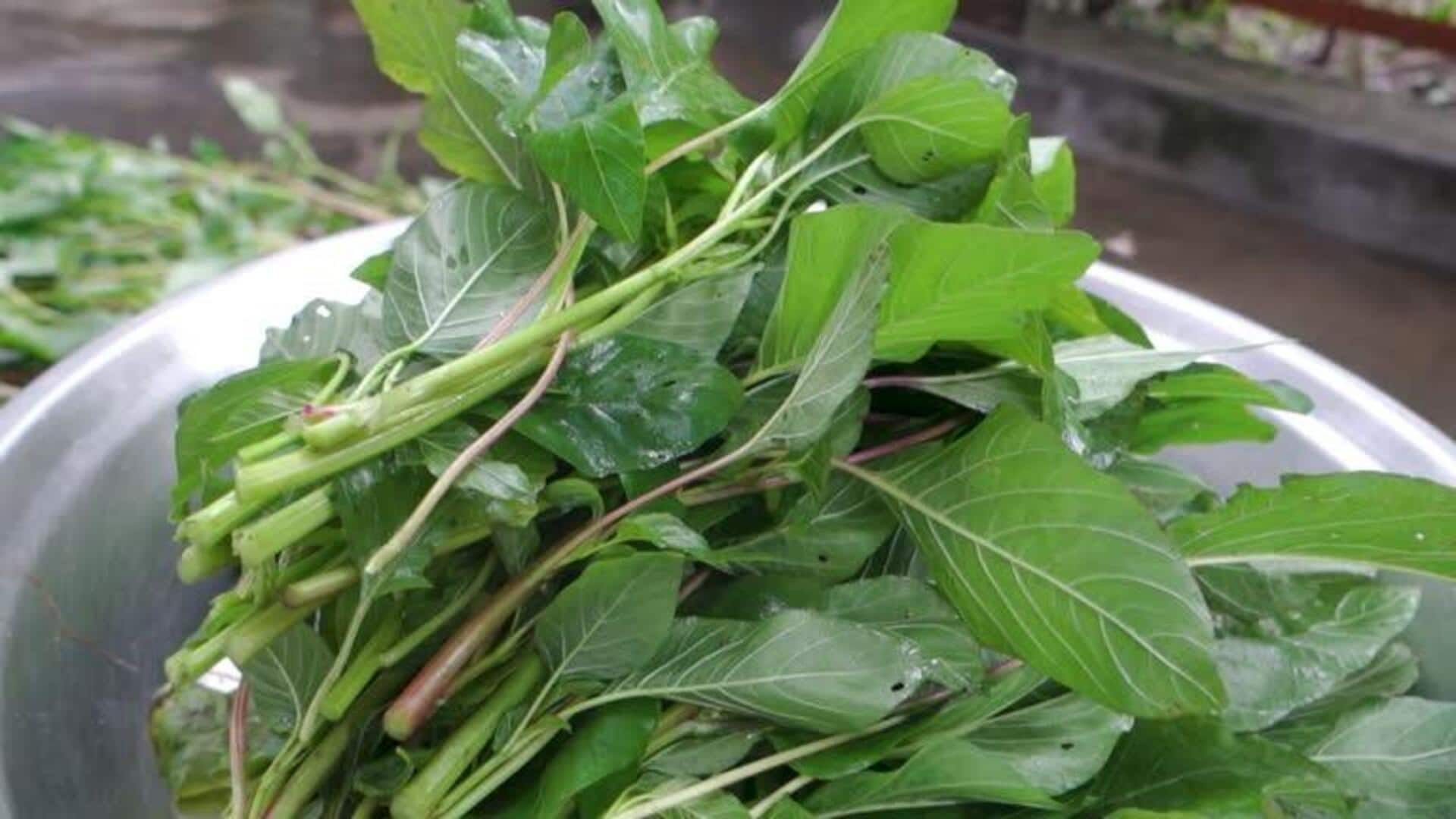
Amaranth leaves: 5 traditional recipes worth trying
What's the story
Amaranth leaves are a staple, nutrient-rich ingredient in many African cuisines. These leaves are rich in vitamins A, C, K, and minerals such as calcium and iron. They are widely used in several traditional dishes. Amaranth leaves not only make a healthy addition to meals but also add flavor and texture to them. Here are five popular African dishes made with amaranth leaves.
Malakwang
Ugandan malakwang
Malakwang is a traditional Ugandan dish, which uses amaranth leaves as the main ingredient. The leaves are boiled with groundnuts to make a thick sauce. This combination makes for an excellent source of protein and nutrients. Usually served with millet bread or rice, malakwang makes for a hearty yet nutritious meal.
Efo riro
Nigerian efo riro
Efo riro is a popular Nigerian vegetable soup made with amaranth leaves. The dish mixes the greens with tomatoes, onions, and spices to make a delicious stew. Rich in vitamins and minerals, efo riro is commonly enjoyed with pounded yam or rice. Its vibrant taste makes it a favorite among those looking for health benefits and delicious flavors.
Sukuma wiki
Kenyan sukuma wiki
Mildly flavored, sukuma wiki is the everyday Kenyan dish that means "push the week." It basically uses the amaranth leaves, sauteed with onions, tomatoes and spices. This humble yet nutritious meal gives essential vitamins like A and C, while being easy on the pocket. Usually served with ugali or chapati, sukuma wiki remains an inseparable part of Kenyan cuisine.
Kontomire stew
Ghanaian kontomire stew
Kontomire stew from Ghana uses amaranth leaves in its rich mix of tomatoes, onions, palm oil, and spices. This stew, which is known for its strong flavors, packs in essential nutrients from iron from the greens themselves. Served over rice or boiled plantains for more nutrition, it is a hit among homes in Ghana.
Mchicha wa nazi
Tanzanian mchicha wa nazi
Originating from Tanzania, mchicha wa nazi uses coconut milk to accentuate the natural taste of amaranth leaves. The two are cooked delicately until they reach tender perfection. With garlic cloves adding aromatic depth and turmeric's golden hue making it anti-inflammatory, it all comes together in one pot. This dish is bound to delight any palate looking for wholesome nourishment without compromise.